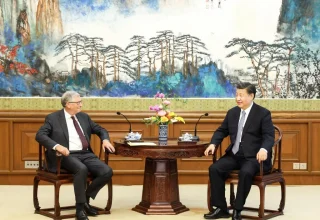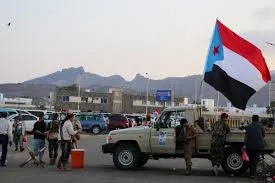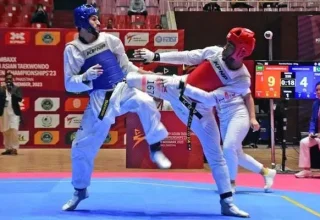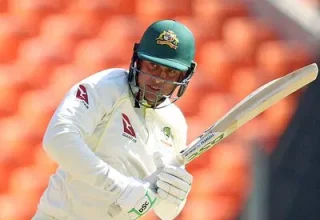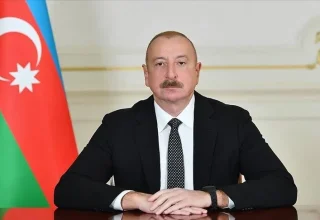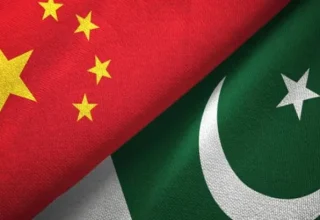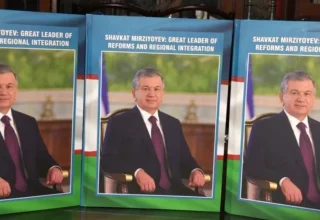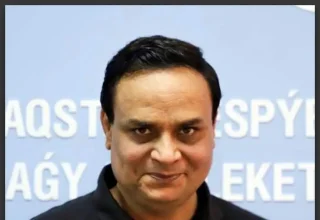
It seems that under President Prabowo Subianto Indonesia has successfully achieved a great economic success by containing the US tariffs up to 19 percent down from the 32 percent.
Indonesian President Prabowo has rightly dubbed it as a new era of mutual benefit. His spokesperson Hasan Nasbi described the outcome as a “meeting point” between two nations, after an “extraordinary struggle” by Indonesia’s negotiating team.
Critical analysis reveals that the Indonesian economy may still enjoy immense opportunities to compete in the US export market, especially with India, which is one of Indonesia’s main competitors in the textile and textile products sector. The US currently imposes a 25 percent import tariff on India providing essential strategic cushion for economic manoeuvrings.
Comparative studies highlight that the US new tariff policy would open up opportunities to further improve Indonesia’s competitiveness in the US market, particularly for its major products that are not produced in the US and are therefore subject to lower tariffs.
It is a good omen that several Indonesian commodities receive zero percent import tariffs, including copper concentrate and copper cathode vividly reflecting strategic dimensions of bilateral mineral trade between the two countries.
Interestingly, recently concluded Indonesia-US trade agreement also includes commitments for Indonesia to purchase several US products i.e. energy products worth US$15 billion, agricultural goods worth US$4.5 billion, and the procurement of 50 Boeing aircraft, mostly Boeing 777 models which may have numerous socio-economic and geopolitical multiplier effects in the days to come.
According to many national economists and experts of Indonesia, the trade tariff agreement between two nations will improve the performance of some domestic sectors like textile, footwear, and furniture which are currently underperforming. Hence, import with zero percent tariff of US products is estimated to push down prices of oil and gas and food products, so they are lower. And it will further strengthen bilateral economic ties between two nations.
The emerging and overlapping economic trends upholds that
there is room for more negotiations to reduce the rate for strategic commodities and items that do not directly compete with US products.
On the contrary the US will also pay attention to tariffs from other trading partners such as the European Union, which, through the Indonesia-European Union Comprehensive Economic Partnership Agreement (I-EU CEPA), has set a zero percent tariff for crude palm oil (CPO) from Indonesia.
Moreover, the Indonesian government’s success in securing the lower rate is part of strategic steps to strengthen supply chains, attract investment, and boost Indonesia’s position as a sustainable trading partner.
Frankly speaking, it is not a one-sided economic concession rather a holistic and comprehensive strategy to open investment opportunities, drive technology transfers, and expand the reach of Indonesian products in a more competitive way. Thus the lower rate is more advantageous for the national economy of Indonesia.
According to many economic estimations with the 19-percent tariff, Indonesia’s GDP is projected to grow by 0.5 percent, driven by an expected increase in investment as global companies relocate manufacturing facilities to Indonesia which will primarily focus on labour-intensive sectors such as textiles, garments, footwear, furniture, and fisheries.
Additionally, Indonesia’s workforce absorption rate could rise by 1.3 percent, which in turn would boost people’s welfare. Moreover, the tariff cut provides momentum for Indonesia to accelerate its deregulation agenda and lower domestic logistics and production costs.
The otherwise higher tariffs would have threatened an estimated 300,000 jobs in Indonesia mainly from its textile sector. While the 19% rate does not eliminate risk, it represents a crucial reprieve from the original tariff threat, which could have severely impacted Indonesia’s manufacturing base.
Some regional critics ironically termed it as a one dimensional agreement, as Indonesia had committed to purchases of US$15 billion in energy, US$4.5 billion in agricultural products and 50 Boeing planes as part of negotiations.
To meet these targets, Indonesia aimed raise the proportion of US-sourced Liquefied Petroleum Gas (LPG) imports from 54% to at least 65% of total LPG imports, and boost US-sourced crude oil imports from under 4% to over 40%.
Planned agricultural imports included wheat, soybeans, and corn, the latter two seemingly clashing with Indonesia’s food self-sufficiency goals. Others feared that footwear and textile exports would still “take a hit” under the 19% rate.
Realistically, purchasing these from the United States would help Indonesia enhance food security by diversifying sources and reducing reliance on any single exporter, thus mitigating the risk of failed harvests or export policy changes.
As for the Boeing purchase, Indonesia had already revived plans to expand Garuda Indonesia’s fleet since December 2024. The national carrier also received an injection of IDR 6.65 trillion from the newly established Danantara sovereign wealth fund to support this effort.
In summary, definitely, the 19% rate is among the lowest in the region and, which will provide ample time to the incumbent Indonesian government to stabilize Indonesia’ industrial policy.
Unfortunately, Indonesia suffered an industrial contraction. Since 2022, more than 60 textile plants have closed, triggering more than 250,000 layoffs. Early 2025 brought further shutdowns culminating in the collapse of Sritex once Southeast Asia’s largest textile producer.
It is predicted that the 19% tariff deal will facilitate the Indonesian policy makers to recover lost ground and reaffirm its manufacturing capacity and productivity. Thus the Indonesian government and manufacturers should make the most of this opportunity assuming that the Trump administration does not shift the goalposts.
Moreover, the recently concluded trade deal seems to be shielding exports and sign of strategic pragmatism reflecting Indonesia’s ongoing effort to maintain strategic balance in its foreign policy.
Jakarta has closed ties with China under the BRI. It has agreed to conclude trade agreements with the EU, by September 2025 and the Eurasian Economic Union (EAEU) by end-2025 and is pursuing entry into multilateral frameworks like the OECD and Comprehensive and Trans-Pacific Partnership (CPTPP)further diversifying its economy and industrial potential.
It seems to be a balanced foreign policy that rather aligning toward any single bloc, Indonesia is upholding its long-standing principle seeking pragmatic partnerships across competing alignments.
The writer submits that the Indonesian policy makers should chalk out a holistic and comprehensive road map for increasing its exports, manufacturing capacity, diversification of its macro-economy and last but not least gearing further opening-up and modernization.
The policy makers must maximize the access it has secured negotiating exemptions wisely and ensuring its products can compete in the US market. Regional socio-economic integration, trans-regional connectivity and promotion of qualitative industrialization along with search for alternative markets must be expedited,
Intra-ASEAN trade and regional supply integration should remain the backbone of the region’s economic resilience. Even as Indonesia finds reprieve, it must not let tariff-driven competition undermine regional cohesion.




